Many new bloggers do need to learn what domain rating is. What does domain rating have to do with keyword ranking? If you increase your website’s domain rating, then your website will have a 100% keyword ranking in the Google search engine. Apart from this, just as SEO helps the Google ranking of a website, if you can make the domain rating of a website 70 +, then the ranking of your website increases by 50%. Let us tell you how to increase your website’s domain rating to grow faster.
What is Domain Rating
Domain Rating is one of the primary metrics Moz provides that indicates the overall strength and authority of a website’s domain according to its proprietary algorithm. It aims to predict how well a website will rank in search engine results pages (SERPs).
The Domain Rating is calculated on a logarithmic scale from 1 to 100, with higher scores representing more vital, more reputable domains. A Domain Rating above 60 is generally considered good, and anything above 70 is excellent.
The Moz algorithm examines over 200 factors to determine a site’s Domain Rating. This includes on-page elements like content quality, website speed and mobile-friendliness, and off-page factors like quantity of quality backlinks and social media influence. The exact formula used is proprietary and not publicly known.
Moz refreshes website metrics each month, so Domain Rating can fluctuate up or down monthly as you make website improvements or as the competitive landscape changes. The goal is continually increasing your website’s Domain Rating through clever SEO tactics to improve organic search rankings and traffic.
Why Domain Rating Matters
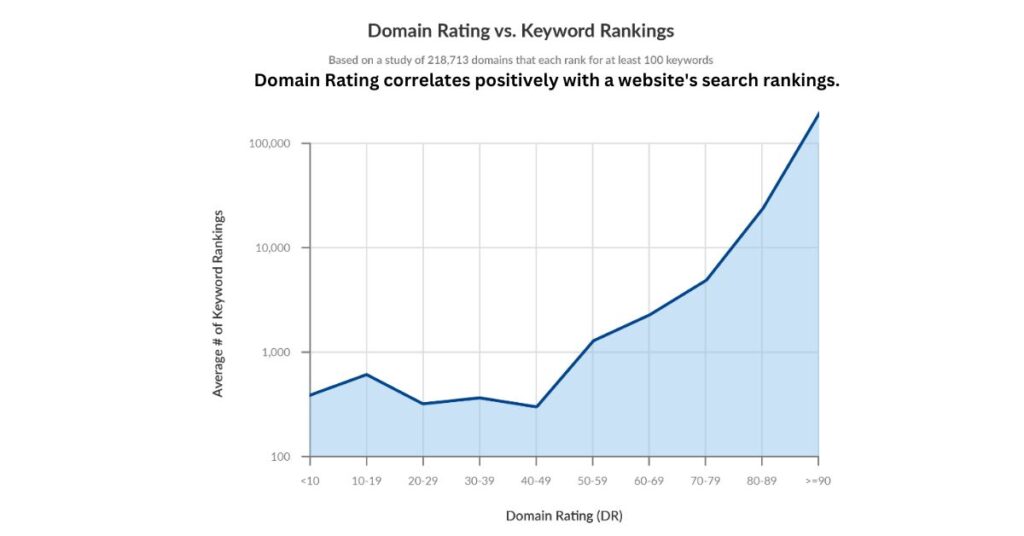
Domain Rating correlates positively with a website’s search rankings. A higher Domain Rating indicates greater website authority and trust. This is an essential signal for search engines when determining how high to rank a site in the search results. Sites with a higher Domain Rating tend to perform better in organic search and earn more clicks.
Domain Rating also impacts how much websites must pay for online advertising. Advertising platforms like Google Ads factor Domain Rating into the quality score they assign to sites. A higher quality score lowers the cost per click to advertise. Therefore, improving your Domain Rating can directly reduce advertising expenses.
Since Domain Rating impacts organic and paid search performance, it’s an essential metric for any website owner to monitor. Tracking Domain Rating provides insight into your online presence’s overall authority and trustworthiness. As you increase your domain rating, you can expect positive effects on search engine rankings, traffic acquisition, and advertising costs.
Check Your Current Domain Rating
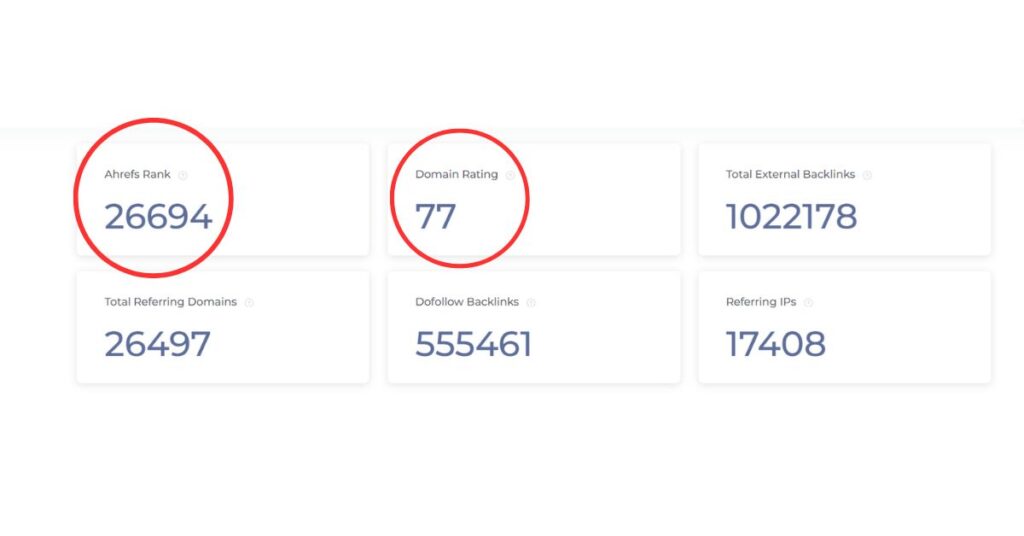
Checking your current domain rating is the first step towards improving it over time. There are a few essential tools you can use to look up your domain’s rating:
- Moz Domain Analysis– Moz provides a free domain analysis tool showing your current domain authority score. This score ranges from 1-100, with higher being better. Enter your root domain, and Moz will check their data and return the domain authority metric.
- Ahrefs– Another excellent tool is Ahrefs. Their domain rating score also ranges from 0-100. After creating a free account, input your domain in the URL bar to see the Ahrefs domain rating. This uses a different formula than Moz but provides another data point.
- SEMrush– Like Ahrefs and Moz, SEMrush offers a free domain analytics tool with authority scores. Enter your domain and view the score under the Domain Analytics section.
- Majestic– Majestic uses a scale of 0-100 called Trust Flow and Citation Flow. While different from domain authority, these help give more context into the quality of your domain. Majestic offers a free basic account to access Trust and Citation Flow.
These free tools will give you a well-rounded view of your domain rating. Make a note of where the scores land on each one. We want to see this rating improve over the coming months as we implement tactics to build domain authority.
Optimize On-Page Factors
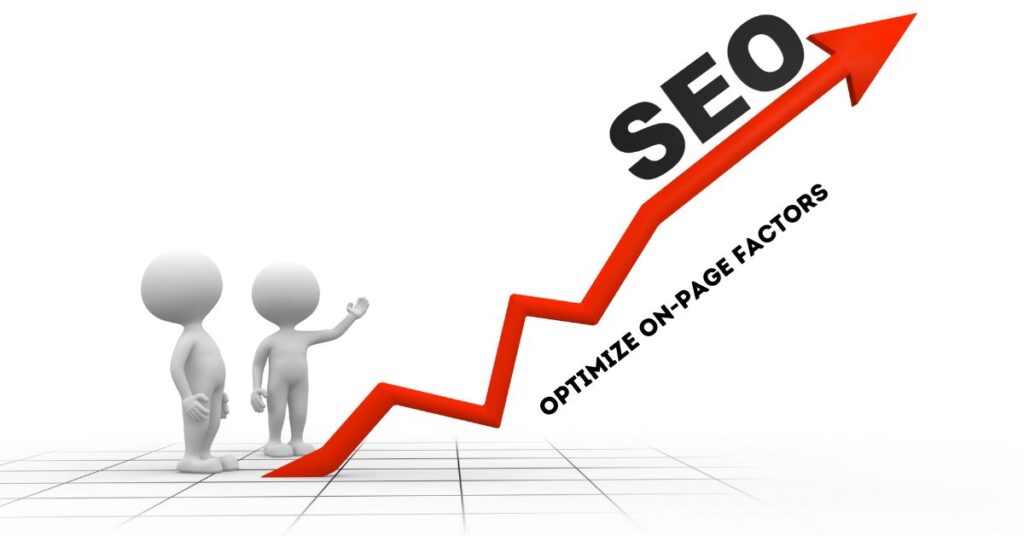
One of the most effective ways to increase your domain rating is by optimizing key on-page factors like content quality, page speed, and mobile friendliness. These aspects help engagement and sign to search engines that your site provides a good user experience.
Focus on Creating Quality, In-Depth Content
The quality and depth of your content significantly influence domain rating. Search engines want to see that your pages offer valuable information to users. Ensure each page has at least 300 words of helpful content that answers search queries and satisfies visitor needs. Write natural content with good organization and formatting. Include images, videos or graphics where relevant to improve the user experience.
Optimize Site Speed
Page speed is a ranking factor, so aim for fast load times across your site. Use page speed checkers to identify any issues slowing things down. Compress large images, enable caching, minimize HTTP requests and optimize code. Faster speeds enhance user experience and satisfaction.
Ensure Mobile Friendliness
With more and more phone search activity, having a mobile-friendly site is essential. Ensure your templates are responsive, pages are easily read and navigated on smaller screens, tap targets are large enough, and forms are optimized. Confirm your site works well cross-browser and on different devices. Fix any mobile usability issues.
By focusing on these critical on-page factors, you can better optimize user experience while signalling to search engines that your site offers valuable, engaging content for visitors. This directly contributes to improving domain ratings over time.
Build High-Quality Backlinks
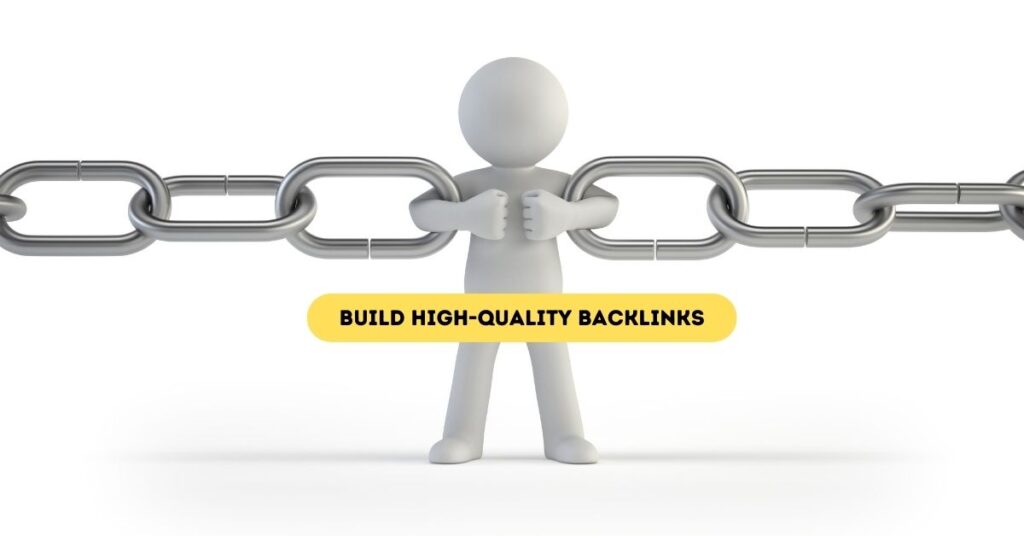
Building high-quality backlinks to your website from trusted sources with relevant anchor text is one of the best ways to increase your domain rating. Focus on earning links from established sites with high domain ratings.
Get links from industry-relevant websites. Reach out to sites in your niche and offer them guest posts, interviews, or other content. Getting links from topically related sites signals search engines that your site is a trusted authority on your subject.
Focus on contextual anchor text. Ensure the anchor text used for your backlinks is relevant and natural language. Avoid overusing generic “click here” links and aggressive keyword anchor text. Varied, contextual phrasing is best.
Earn links editorially. Create and pitch compelling, high-quality content to online publications and blogs to get placed editorially. Securing links earned as a result of great content carries more SEO value.
Request feedback links. When mentioned positively on other sites, politely request a link to your original content as a citation. Most publishers are happy to add citation links to credit sources.
Partner with reputable sites. Guest posting, sponsorships, brand mentions, and other partnerships with high-authority sites in your industry can help you secure valuable backlinks. Look for quality over quantity.
Build a link-worthy resource. By publishing in-depth, noteworthy content like guides, tools, and resources on your site, other publishers will find your content and naturally link to it. But it must offer actual value.
Diversifying your backlink portfolio through editorial links, partnerships, outreach, and link-worthy assets is the best approach to building scale-quality backlinks. This strengthens your overall domain authority. Monitor your progress over time, and remain patient. Done right; earned backlinks will steadily improve your domain rating.
Leverage Social Media
Social media platforms like Facebook, Twitter, Instagram, LinkedIn, Pinterest, and YouTube provide valuable opportunities to increase your domain authority and rating. Focus on growing your number of engaged followers, likes, shares, and backlinks from these platforms.
- Create social media accounts for your website and brand if needed. Make sure to complete your profiles fully.
- Post high-quality, engaging content regularly. Share blog posts, images, infographics, videos, special offers, company news, etc.
- Use relevant hashtags and tag influencers or brands related to your niche to extend your reach.
- Run occasional contests and giveaways to incentivize social sharing and follows.
- Engage with your followers by liking, commenting on, and sharing their content when relevant.
- Join related Facebook groups and subreddits to participate in the community. Share your expertise.
- Consider running social media ads to expand your follower base.
- Add social sharing buttons prominently on your blog posts and website pages.
- Interlink your social profiles on your website and in email signatures.
Social signals like followers, shares, likes and backlinks communicate trust and authority to search engines. Leveraging social media thoughtfully can significantly boost your domain authority over time.
Acquire Citation Properties
Getting your website and business listed on high-authority directories and citation sites can help boost your domain rating. These sites list basic business information, such as name, address, phone number, website, and sometimes reviews. Consistent NAP (name, address, phone number) information across the web helps search engines understand your business identity and trustworthiness.
Some important citation properties to consider acquiring include:
Yelp – Claim and optimize your Yelp business listing. This is one of the most authoritative business directories.
Apple Maps – Ensure your business is listed correctly here, as Apple has strong domain authority.
Wikipedia – Try to get a Wikipedia page for your business. The domain authority of Wikipedia pages is very high.
Industry directories – Identify key directories related to your niche and make sure you have a listing with complete information. These can include directories like Houzz for home services or Crunchbase for tech companies.
Local directories – Pay attention to local business directories like Chamber of Commerce sites, local media outlets, and niche regional directories. These help establish your local presence.
As you acquire listings, keep your NAP details consistent across all properties. This helps reinforce your identity and avoid duplicate or unverified listings that hurt your domain authority. Monitor your listings regularly to keep information up to date. Having authoritative, properly structured citations points back to your website in a natural way that search engines appreciate.
Remove Harmful Links
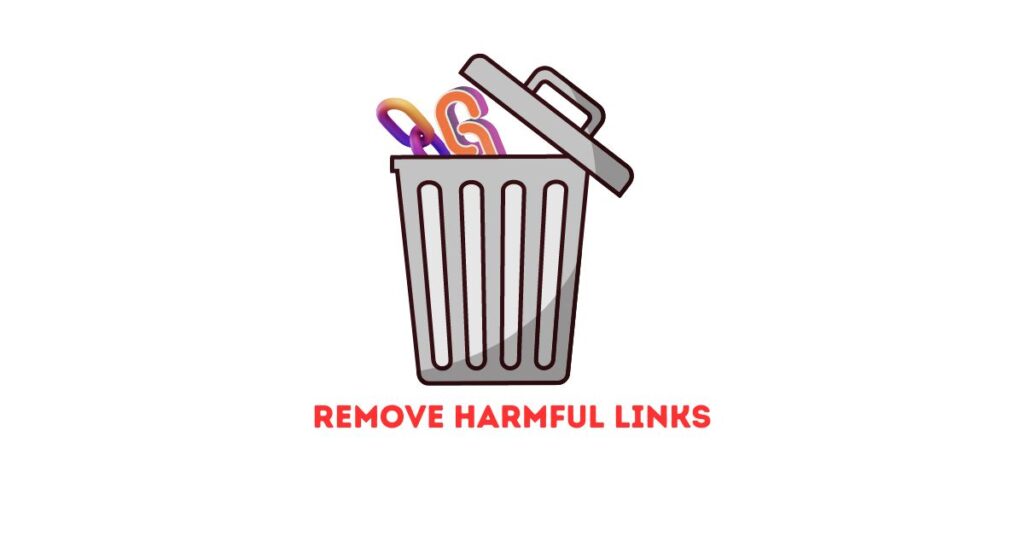
A critical step for increasing domain rating is to remove any harmful or toxic backlinks pointing to your site. Google uses backlinks as one of the top ranking factors; however, links from low-quality, spammy or suspicious sites can hurt your domain rating.
It’s essential to routinely audit your backlink profile to identify any harmful links that should be removed. Here are some best practices for cleaning up toxic backlinks:
Link Audits: Use tools like Ahrefs, Majestic or SEMrush to analyze your backlink profile and flag any questionable links, such as from link farms, spammy directories or pages with thin or unrelated content. Sort results by spam score or DR to spot toxic links.
Disavow Links in Google Search Console: If you find harmful links in a link audit, you can disavow the URLs in Google Search Console to tell Google not to consider them in rankings. Just submit the links via the Disavow Tool.
Contact Webmasters to Remove Links: For sites you have connections with, consider reaching out and politely asking web admins to remove harmful links pointing to your site. Offer to remove reciprocal links you control.
Remove Access to Bad Link Sites: If you previously created guest posts on low-quality sites, update passwords to remove their access. Use the deindex date in the Search Console to remove pages more quickly.
Clean Up Unnatural Link Building: If you previously engaged in link schemes like paid links or low-value article directories, work to clean up and reverse any manipulative linking. Avoid these tactics in the future.
Keep Monitoring Link Profile: Check back routinely for new toxic links that may have been built and continue cleaning up harmful backlinks over time. A clean, high-quality profile is critical for maximum domain rating.
By actively managing and culling your backlink profile of any harmful, artificial or manipulated links, you can help position your domain for improved trust and performance in Google’s algorithms. Eliminating toxic links is an intelligent step for enhancing domain rating.
Monitor Progress Over Time
Monitoring your progress consistently over an extended period is essential to increase your domain rating. Aim for steady, natural growth over months and years rather than unsustainable spikes over weeks or days.
The best way to track progress is to use domain rating tools regularly. Moz and Ahrefs both offer domain rating tracks. Set up accounts with your preferred tool and check in every month or quarter to gauge your growth trajectory.
Compare your previous domain rating with your current score. Are you trending upward overall? If so, you’re on the right track. If your rating stalls or declines, correct the course and examine what may have changed.
Record major milestones, outreach campaigns, link-building strategies, and other domain-strengthening activities. Tie these efforts to fluctuations in your domain rating so you can identify what works and what doesn’t.
Be patient. Trustworthy, high-quality domains take time to build. If you progress steadily, stick with your long-term link-building and content strategy. Over time, you’ll see the payoff through continuously increasing domain authority.
Be Patient
It takes time and consistency to see results when building domain authority. This is a long-term strategy that requires patience. Don’t expect your domain rating to shoot up overnight.
Building high-quality backlinks, optimizing pages, leveraging social media – these efforts compound over weeks and months. Stay committed to putting in the work. Maintain focus on creating stellar content that earns links. Consistency leads to authority.
Keep monitoring your domain rating at regular intervals to track progress. But keep going if you see immediate drastic changes. Google needs time to assess signals and crawl new pages. As you continually add value, your domain authority will gradually improve.
Trust that staying the course provides compounding returns over time. Consistent effort now pays off exponentially later. Keep sight of the end goal, but take the slow and steady path. With patience and persistence, your domain will be rewarded with higher authority and traffic. The long game is where lasting success is built.

